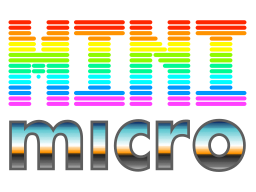Difference between revisions of "Mini Micro"
Jump to navigation
Jump to search
(Link to the Mini Micro / miniScript pages) |
(TileDisplays support scrolling, not rotation!) |
||
| Line 8: | Line 8: | ||
* [[PixelDisplay|Pixel graphics]] (32-bit color, 960x640 display) | * [[PixelDisplay|Pixel graphics]] (32-bit color, 960x640 display) | ||
* [[SpriteDisplay|Sprite graphics]] (layering, scaling, rotation, tint, simple collision detection, and scrolling) | * [[SpriteDisplay|Sprite graphics]] (layering, scaling, rotation, tint, simple collision detection, and scrolling) | ||
| − | * [[TileDisplay|Tile graphics]] (arbitrary tile size, support for hexagonal layouts, scaling, and | + | * [[TileDisplay|Tile graphics]] (arbitrary tile size, support for hexagonal layouts, scaling, and scrolling) |
* [[Sound|Sound and music]] (both synthesized in code, and audio files in standard formats) | * [[Sound|Sound and music]] (both synthesized in code, and audio files in standard formats) | ||
* [[TextDisplay|Text display]] (68 by 25 characters) | * [[TextDisplay|Text display]] (68 by 25 characters) | ||
Latest revision as of 14:00, 16 March 2024
Mini Micro is a desktop application for Windows, macOS, and Linux. It simulates a retro-style home computer, built atop the MiniScript language. It is intended as both an educational environment for beginning programmers, and a game/simulation development environment for more experienced coders. Apart from execution speed, Mini Micro runs identically on all desktop machines, providing a very uniform environment for app development.
Features
In addition to the standard MiniScript language features, Mini Micro comes with an extensive API which includes the following functionality:
- Pixel graphics (32-bit color, 960x640 display)
- Sprite graphics (layering, scaling, rotation, tint, simple collision detection, and scrolling)
- Tile graphics (arbitrary tile size, support for hexagonal layouts, scaling, and scrolling)
- Sound and music (both synthesized in code, and audio files in standard formats)
- Text display (68 by 25 characters)
- File operations, including reading and writing images
- Full keyboard, mouse, and game controller support
